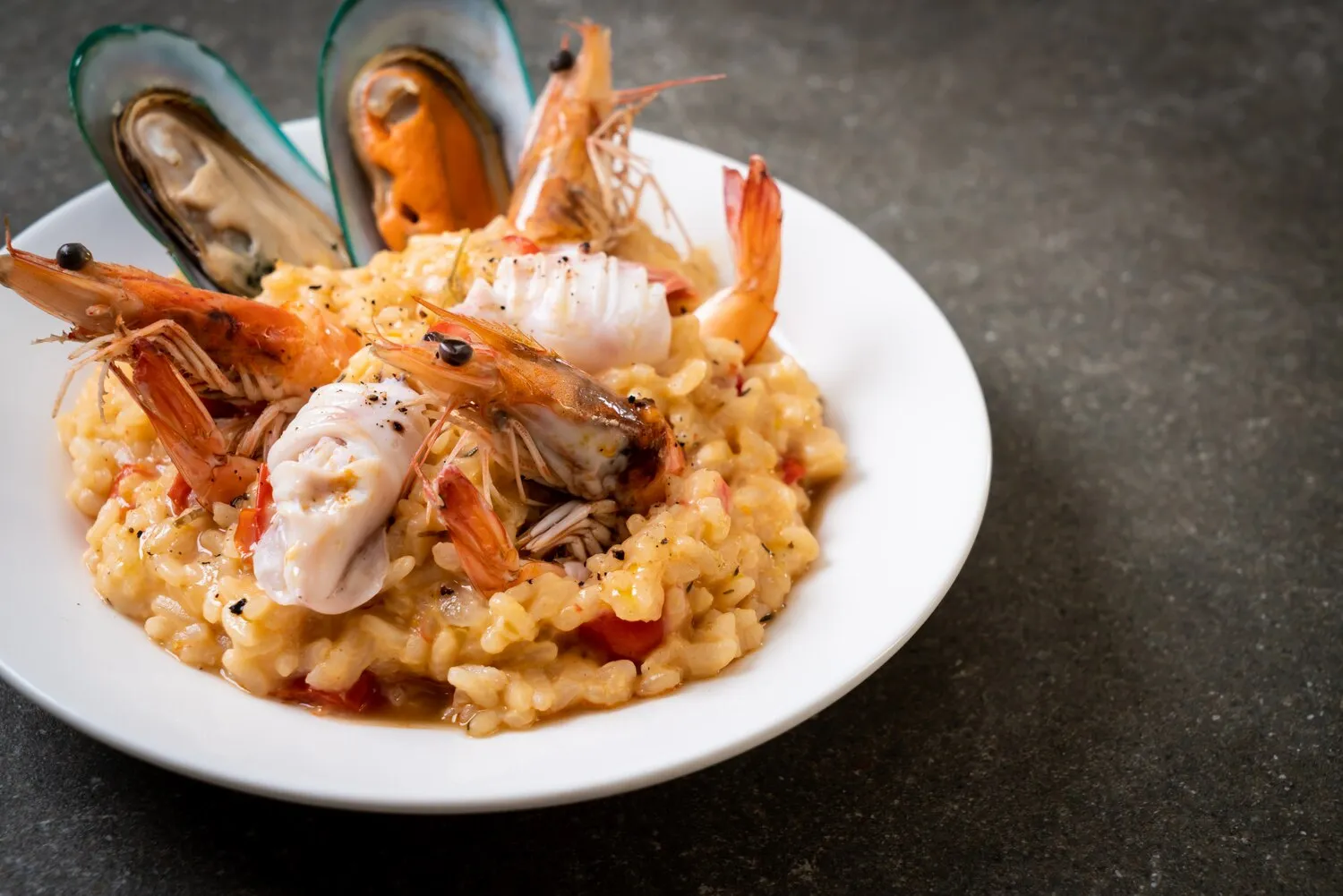
Arroz de Marisco
Seafood rice, a popular Portuguese rice dish cooked with various seafood.
Nutrition Facts
* The % Daily Value (DV) tells you how much a nutrient in a serving of food contributes to a daily diet. 2,000 calories a day is used for general nutrition advice.
Casa do Benfica - Loures
Portugal's long coastline and maritime history have deeply influenced its cuisine, leading to the development of seafood-rich dishes like Arroz de Marisco. The use of rice, though not native to Portugal, became prominent due to trade routes established during the Age of Discovery, and its combination with locally sourced seafood reflects Portugal's ability to blend global influences with native ingredients.
Arroz de Marisco is more than just a dish; it's a symbol of Portuguese hospitality and culinary heritage, often served at family gatherings, celebrations, and special occasions. It represents the close connection the Portuguese have with the sea and the importance of fresh, locally sourced ingredients.
Celebratory Dish
Arroz de Marisco is frequently prepared for special occasions, like birthdays, holidays, or family reunions. Its generous portions and rich flavors make it a centerpiece of convivial dining.
Regional Variations
While the basic recipe remains consistent, regional variations exist based on the availability of specific seafood. Coastal regions may feature more local catches, while inland regions may adapt the recipe with readily accessible alternatives. Each restaurant offers its own unique twist.
Sharing and Community
Traditionally served in a large pot or casserole dish, Arroz de Marisco is intended to be shared amongst diners, fostering a sense of community and togetherness around the meal.
Arroz de Marisco is a celebration of oceanic flavors, combining the savory richness of seafood with the comforting simplicity of rice. The dish is typically brothy and intensely flavored by the seafood stock, creating a symphony of tastes and textures.
The primary flavor profile is dominated by the freshness of the seafood. Commonly used ingredients include prawns, clams, mussels, crab (often spider crab or brown crab), and sometimes lobster. These ingredients contribute distinct flavors and textures, from the sweetness of prawns to the briny taste of clams. The rice absorbs the flavorful broth created by cooking the seafood, along with tomatoes, onions, garlic, and white wine. Herbs like coriander and parsley are frequently added for brightness and aromatic complexity. Piri-piri (chili peppers) can be incorporated for a subtle spicy kick.
Seafood Quality
The quality of the seafood is paramount. Fresh, locally sourced ingredients will result in the best flavor and texture. Look for seafood that is firm, smells fresh, and has bright, clear eyes.
Broth Preparation
The broth is the heart of the dish. Using a homemade seafood stock, made from shrimp shells, crab shells, or fish bones, will significantly enhance the flavor. Alternatively, a high-quality store-bought seafood stock can be used.
Rice Selection
Although some prefer Carolina rice, Bomba or Arborio rice varieties, which are short-grain rice types, are well-suited for Arroz de Marisco because they absorb a lot of liquid and become creamy without becoming mushy.
Cooking Time
Avoid overcooking the seafood, as it can become rubbery. Add the seafood to the rice near the end of the cooking process, allowing it to gently poach in the broth until just cooked through.
Explore additional Portuguese dishes and restaurants
Explore PortugueseDiscover top dining spots and culinary experiences in Loures.
Explore LouresLearn more about the food culture, restaurant scene, and culinary heritage of Portugal.
Explore Portugal